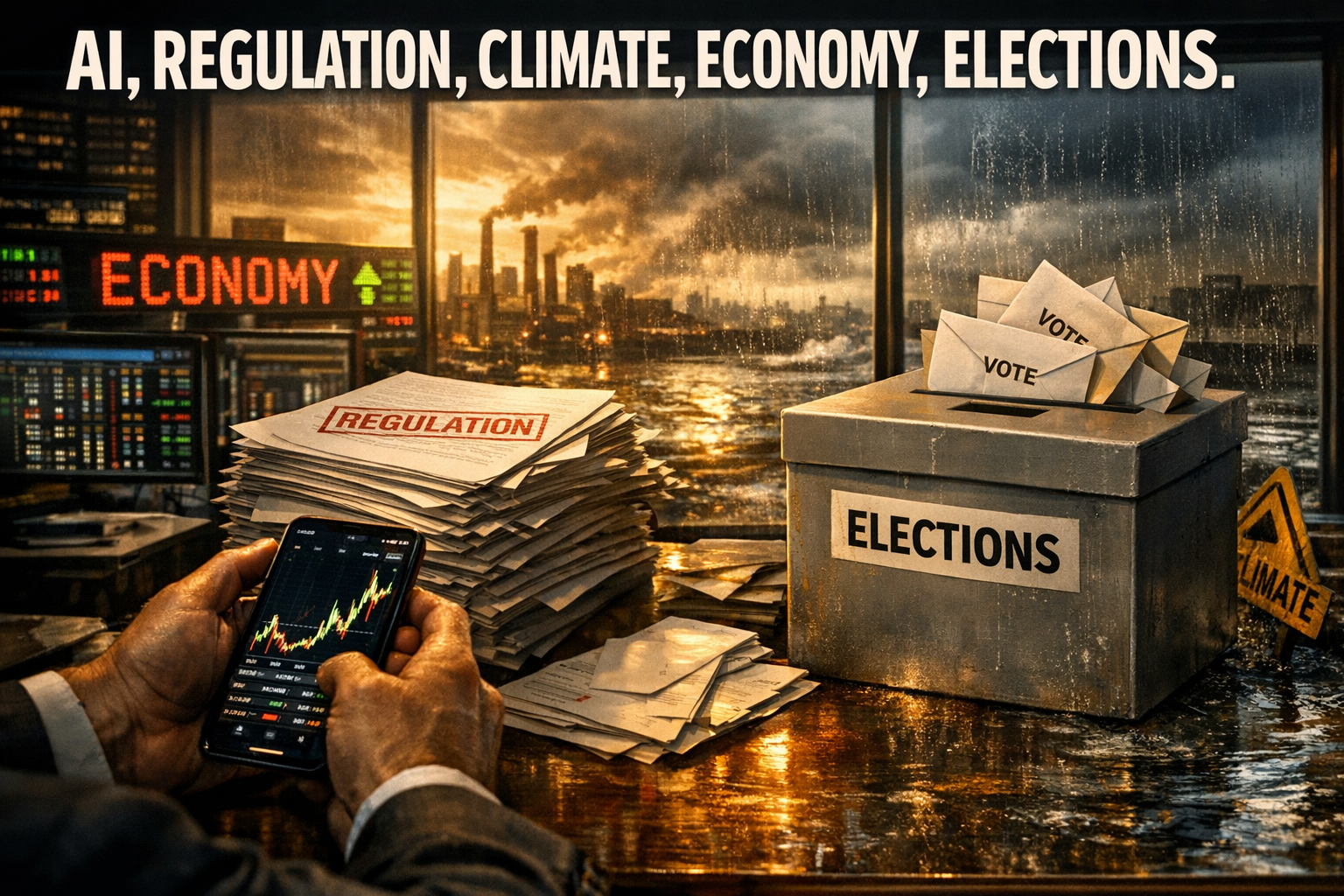● Job Shock, Tariff-Driven Inflation, Rate Cut Trap – Market Correction
Rapidly Changing Stock Market: Employment Shock, Tariff Impact, and the Implications of Impending Interest Rate Cuts
July Employment Data Shock and Revisions
The recent release of the July non-farm employment figures, showing a lower-than-expected 73,000 new jobs, has caused a shock.
Notably, there were significant data revisions for May and June statistics, where figures were adjusted from an actual 140,000-150,000 jobs to 19,000-14,000, effectively eliminating a total of 250,000 jobs.
These numerical adjustments raise doubts about the reliability of employment data, and even political circles are embroiled in controversy, further complicating the situation.
Labor Market and Interest Rate Cut Outlook: The Trap of Unemployment and Participation Rates
Current unemployment rates appear relatively favorable at 4.25%, but there is a possibility of it rising to 4.9% if the trend continues.
Furthermore, intensified crackdowns on illegal immigration pose a risk of declining labor force participation, which could lead to a more complex labor market situation than simply rising unemployment.
All these circumstances act as major variables influencing the global economy, further intensifying discussions about a potential interest rate cut in September.
Tariff Shock and Inflation: The Dilemma of Interest Rate Cuts
Recent imposition of tariffs has led to a confirmed weakening of consumer sentiment and an increase in the Personal Consumption Expenditures (PCE) price index.
Price index figures that are 0.1 to 1 percentage point higher than expected suggest that inflationary pressures may persist.
Thus, inflationary pressures complicate central banks’ decisions regarding interest rate cuts, sparking debate about the precursors to stagflation alongside recession concerns.
Stock Market Overheating and Correction Scenarios
The recent sharp decline in the Nasdaq Composite Index and major tech stocks suggests a potential shift from an overheated stock market to a corrective phase.
While the index decline is expected to be around -3%, a larger correction could occur in the short term.
Considering both market overheating and correction scenarios, investors may need to adjust their portfolios to prepare for rapid volatility.
Future Outlook: Possibility of Recession and AI Momentum
Historically, corrections after excessive rallies are temporary, but if multiple warning signs such as employment data and tariff shocks converge, the possibility of a recession cannot be ruled out.
However, at the same time, positive factors such as AI momentum and expanded liquidity, which support corporate earnings, also exist.
Therefore, considering short-term employment data and interest rate cut expectations alongside the long-term economic outlook, there is a strong possibility that the global economy and stock market will return to an upward channel after a correction.
The July employment data shock, statistical revisions, and tariff-induced inflation are having a significant impact on the stock market and interest rate cut forecasts. Amid simultaneous fluctuations in labor market unemployment and participation rates, and market overheating and correction scenarios, a state of short-term uncertainty coexists with positive long-term expectations driven by AI momentum. Given these complex variables, investors need to exercise cautious judgment and preparation.
[Related articles…] Interest Rate Outlook | Employment Shock
*YouTube Source: [ 월텍남 – 월스트리트 테크남 ]
– 생각보다 더 큰일난 이유…ㄷㄷ
● Stablecoin Blitz – Global Money Game-Changer
The Wave of Stablecoin Innovation: Beyond Investment Value to Utility and Global Economic Transformation
1. Stablecoin Concept and Investment Perspective
Stablecoins have almost no price volatility and are utilized not merely as an investment tool but as a means for real-life payments and various financial services. This technology holds the potential to resolve the complex structures and high fee issues of traditional financial transactions. In particular, it is establishing itself as a key element leading innovation in digital currency and financial technology, building trust through a blockchain-based transparent system. The movements of companies that issue stablecoins and build their ecosystems can become a significant competitive advantage in the future market.
2. KRW-denominated Stablecoins vs. USD-denominated Stablecoins
KRW-denominated stablecoins are gaining attention as a countermeasure against concerns over weakened monetary sovereignty caused by current USD-denominated stablecoins. Within Korea, there is exploration of the possibility of protecting monetary sovereignty while simultaneously creating opportunities for global market expansion, including Southeast Asia. The competition between the two is not merely an exchange rate issue but is linked to innovation in the financial ecosystem, showing significant differences in the methods of convergence with existing banking and financial systems. Such movements are crucial points that will change the landscape of the global economy in the fields of financial technology and digital currency.
3. Technological Innovation through Blockchain and Smart Contracts
The core of stablecoins lies in blockchain technology and smart contracts, which ensure the system’s transparency and automation. Smart contracts operate automatically under specific conditions to perform functions such as currency exchange, maintenance of financial soundness, and risk management. Thanks to these technological characteristics, problems that arose in traditional financial transactions can be fundamentally improved. It contributes to strengthening the role of stable digital currency along with innovative progress in the financial sector.
4. Impact on Global Economy and Financial Technology Innovation
The introduction of stablecoins changes the landscape of the global economy, particularly signaling a challenge to the US-centric dollar system. The development of digital currencies like CBDCs and financial technology creates a new competitive arena for financial institutions and big tech companies. Policy changes by governments worldwide, such as US regulations and the GENIUS Act, will broaden the scope of stablecoin utilization. Alongside this, financial solutions combined with various industrial sectors are expected to increasingly complement even replace existing banking systems.
5. Financial Institutions’ and Corporations’ Response Strategies and Future Outlook
Existing financial institutions and card operators seek to counter threats by issuing stablecoins and building platforms. Companies should pursue financial technology innovation by creating new payment systems, remittance, and settlement ecosystems through stablecoins. Furthermore, a strategy of building a converged financial technology ecosystem by integrating with various business models such as carbon credits and STOs is a crucial issue. The future sustainability and success of stablecoins depend on concrete use cases in real life and their spread as a utility rather than an investment object.
6. Conclusion: Opportunities and Challenges of Stablecoins
Stablecoins, due to their stable characteristics with no volatility, should be perceived as real-life utility tools rather than investments. The parallel operation of KRW- and USD-denominated stablecoins is expected to create new value and competitiveness in domestic and international financial markets. Within the major trends of the global economy and financial technology, stablecoins are emerging as a core means to overcome the limitations of existing systems and drive innovation. Therefore, it is crucial for financial institutions and related companies to seize this opportunity through calm analysis and systematic preparation. Continuous efforts are needed to closely observe future market changes and the legal and regulatory environment, while creating practical use cases.
< Summary >
Due to their lack of volatility, stablecoins are utilized for actual payments and improving financial services rather than as investment tools. The introduction of KRW-denominated stablecoins simultaneously provides a defense against the dollar-led monetary system and opportunities for global market entry. Through blockchain and smart contracts, transparent and stable operations are possible, which will contribute to financial technology innovation and the expansion of the digital currency ecosystem. Existing financial institutions and companies need a strategy to establish a sustainable financial environment by building new business models utilizing stablecoins.
[Related Articles…]Stablecoin Market OutlookBlockchain Innovation and Financial Revolution
*YouTube Source: [ 티타임즈TV ]
– “Many people are saying, ‘This is it,’ about the stablecoin wave.” (Park Min-soo, Vice Chairman o…
● Heatwave Crisis – Economy Collapses, Humanity Faces Extinction
Heatwaves and Climate Crisis: At the Crossroads of Human Survival and Global Economic Outlook
[00:00 ~ 03:26] Heatwaves and the Harbingers of Rapid Climate Change
Through an interview with Science Communicator Director Lee Jung-mo, we examine the heatwave phenomena and the economic ripple effects of the climate crisis being experienced not only in Korea but worldwide.
Record-breaking heatwaves and sustained temperature increases are not merely abnormal weather events but are significantly impacting the global economy, environmental technology, and ecosystem changes.
Focusing on five SEO keywords – economic outlook, global economy, climate crisis, environmental technology, and ecosystem change – we delve into the economic challenges posed by the climate crisis.
[03:27 ~ 07:37] Changes in Korea’s Climate and Economic Implications
Korea is transitioning to a subtropical climate faster than in the past, and the start of summer has moved from June to May.
Such climate changes are affecting the economy as a whole, including agriculture, urban infrastructure, and energy consumption.
Particularly from an economic outlook perspective, abnormal climate phenomena act as major variables demanding additional investment and technological development in food security, water resource management, and infrastructure improvement.
[07:38 ~ 10:05] Climate Crisis and the Limitations of Global Urban Infrastructure
Major cities worldwide are being heavily impacted by heatwaves and sudden squalls (short, intense downpours).
Economic and infrastructure systems, especially essential facilities like sewers and air conditioners, have reached a point where past design standards are insufficient to cope.
The global economy may also face short-term economic instability due to increased cost burdens, reconstruction, and demands for technological investment arising from such infrastructure vulnerabilities.
[10:06 ~ 14:39] Ecosystem Collapse and the Paradigm Shift of Human-Centric Economy
Rapid ecosystem changes and a decrease in biodiversity are long-term issues directly linked to human survival.
As evidence of human extinction debates and the risk of mass extinction, it suggests the need for economic restructuring, including environmental technology, advanced agriculture, and urban redevelopment.
In terms of economic outlook, investment in environmental technology and sustainable growth models are essential, requiring a restructuring of the global economy through these means.
[14:40 ~ 20:01] Economic Effects of Consumption Patterns, Energy Efficiency, and Technological Innovation
While individual consumption changes like using paper straws or tumblers may seem minor, improving the energy efficiency of essential home appliances like air conditioners offers a significant economic turning point.
The development of the global economy and environmental technology transcends simple consumption trends, impacting the entire economy through energy savings, greenhouse gas emission reduction, and infrastructure innovation.
At this juncture, technological innovation acts as the most powerful weapon for addressing the economic outlook and climate crisis, and it is an area that requires collaboration between government and the private sector.
[20:02 ~ Conclusion] Hope Found Amidst Crisis and Economic Response Strategies
Beyond the simple slogan of “The Earth is hurting,” we must now recognize that the economic system itself is facing a crisis.
Amidst ecosystem changes and the risk of human extinction, the economy must be redefined not merely as wealth creation but as part of a human survival strategy.
It is imperative to shift the human-centric development paradigm through the global economy, climate crisis, and environmental technology, and to invest in and develop technologies for a sustainable future.
We must remember that the direction we choose moving forward is not solely for the Earth’s health, but a core element that will ensure our economy, quality of life, and the sustainable growth of the global economy.
Heatwaves and rapid climate change are not merely weather issues.
Globally, including in Korea, climate change is leading to impacts on the economy, infrastructure, consumption patterns, and ecosystem collapse.
The development of the global economy and environmental technology is key to overcoming the climate crisis, and sustainable investment and innovation are absolutely necessary for human survival.
[Related Articles…]
Climate Crisis and Economic Outlook
Global Economy and Technological Innovation
*YouTube Source: [ 지식인사이드 ]
– “폭염은 시작일 뿐” 인간 멸종이 진행되고 있다는 증거ㅣ지식인초대석 EP.53 (이정모 관장 1부)


